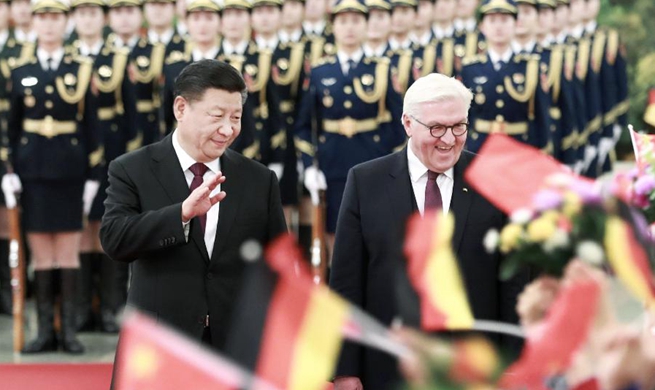NEW YORK, Dec. 11 (Xinhua) -- Chinese SUV brands in the semi-premium segment are catching up with their foreign rivals as they improve in technology and cater to consumers' needs, according to the latest industry report released by brand valuation consultancy Brand Finance.
In its report titled "Chinese Automobiles 2018," the consultancy said that although most Chinese brands are still in the middle to low-end market, some Chinese brands such as WEY and Lynk & Co are targeting a slightly higher income segment by using better technology and more differentiated, premium marketing.
Present in the market for only two years, WEY already commands seven percent of the market for 150,000- 200,000-yuan (21,741 U.S. dollars to 28,988 dollars) cars - a market which constitutes 1.4 million units sold a year in China. Lynk& Co sold more than 4 percent of vehicles in that segment, said the report.
The report said prejudice against Chinese brands is waning with WEY considered more "Stylish" and "Cool" than Land Rover by a new generation of consumers.
Brand value of the top five Chinese brands has risen 92 percent from 2017 to 2018, largely thanks to local demand. In comparison, the value of brands from other countries has risen only 9 percent, according to the report.
Alex Haigh, Auto Industry Director at Brand Finance, said Chinese brands have struggled to extend overseas largely because at their price point, they have been seen as less safe and less desirable alternatives to Western brands. But the situation has been changed.
"Especially WEY - which has a specific objective to expand overseas - appears to be breaking this mould. We may therefore start to see their models become as much a staple of not only Chinese but also European and American motorways as Toyotas and Volkswagens are today," said Haigh.
However, the report said international brands still score better among customers on comfort, prestige, and technology and it will be some time before Chinese brands are able to position themselves realistically as luxury alternatives.
There is clearly no instinctive barrier to demand against Chinese brands because country of origin is among the least important factors drivers consider, said the report.
It added that with the right combination of models, service, communication, distribution, and a more established position in the market, it seems likely that demand will expand.
"The key to breaking through into more premium segments is improving brand perceptions to move away from a competition on price," said Haigh.

















